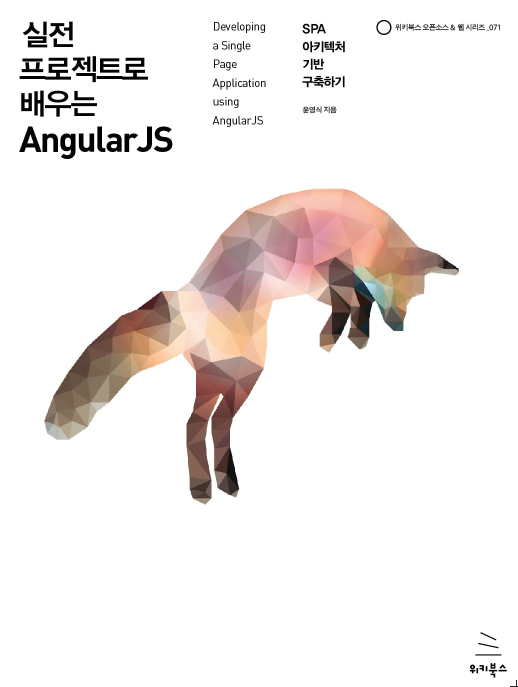실습-1 에서 데이터를 어떻게 사용하는지까지 살펴보았다. 이번에는 데이터와 DOM을 바인딩하여 다양한 모양을 그려본다
1. 준비
- p tag 없는 html에서 시작
<!DOCTYPE html>
<html>
<head>
<script type="text/javascript" src="d3.min.js"></script>
</head>
<body>
</body>
</html>
- p tag의 __data__ 속성값 확인
var theData = [1,2,3];
var p = d3.select('body').selectAll('p').data(theData).enter().append('p').text(function(d) { return d;});
console.log(p);
- 결과 : p element 객체가 array 형태로 return 된다
2. SVG Shape Element 그리기
- circle svg shape 그려보기 (참조)
- circle 필수 attribute
+ cx : 원중심의 x좌표값
+ cy : 원중심의 y좌표값
+ r : 원 반지름
- 모양 만드는 순서
+ SVG의 크기 width, height를 정한다 : append('svg')
var circleRadii = [40, 20, 10];
var svgContainer = d3.select("body").append("svg").attr("width", 200).attr("height", 200);
+ SVG 안에 child element로 포함될 SVG shape element를 append(추가)한다
var circles = svgContainer.selectAll('circle'). data(circleRadii).enter().append('circle');
circles 객체의 내역
+ 데이터를 DOM과 바인딩하여 원을 그린다
var circleAttributes = circles.attr('cx', 50).attr('cy', 50).attr('r', function(d){ return d; }).style('fill', 'blue');
결과로 파란원만 나온다
- 값에 따라서 원의 색깔을 틀리게 해보자
var circleAttributes = circles.attr('cx', 50).attr('cy', 50).attr('r', function(d){ return d; }).style('fill', function(d) {
if(d == 40) { return 'green'; }
else if(d == 20) { return 'yellow'; }
else if(d == 10) { return 'orange'; }
else { return 'blue';}
});
- 결과
3. SVG 좌표 기준 알기
- SVG는 일반적은 x-y축에 대한 기준을 사용하지 않는다 (참조)
- SVG x=0, y=0 은 top left 에서 시작한다
x 값은 left -> right
y 값은 top -> bottom
으로 증가한다
- 좌표 테스트
// 데이터
var spaceCircles = [30, 70, 110];
// svg 영역 확보
var svgContainer = d3.select("body").append("svg")
.attr("width", 200)
.attr("height", 200);
// svg shape virutal element 생성
var circles = svgContainer.selectAll("circle")
.data(spaceCircles)
.enter()
.append('circle');
// 데이터 바인딩통하여 원그리기
var circleAttributes = circles
.attr("cx", function (d) { return d; })
.attr("cy", function (d) { return d; })
.attr("r", 20 );
* 원의 색깔도 넣어보자 ^^
4. D3.js 의 자료구조
- 계속 Array를 사용해 왔다 : 배열의 값은 number, string, object, array, HTML Element, DOM element 가능 (참조)
- Array로 넘어 올때 index에 대한 접근도 가능하다 : i 값이 array의 index 값
var theData = [ 1, 2, 3 ];
var p = d3.select("body").selectAll("p")
.data(theData)
.enter()
.append("p")
.text(function (d, i) {
return "i = " + i + " d = "+d;
});
- 외부에서 데이터를 가져올 수도 있는데 이때는 반드시 배열로 와야한다
> XMLHttpRequest
> text file
> JSON blob
> HTML document fragment
> XML document fragment
> comma-separated values (CSV) file
> tab-separated values (TSV) file
- JSON 형태의 데이터는 반드시 key: value 모두 double quotes로 묶는다. 그리고 d3에 데이터전달시 JSON Array 이어야 함
var seniorEngineer = {
"name":"YoungSik",
"drink":"not much",
"number":"9578"
};
- JSON Array로 활용하여 원을 표현해 보자(참조)
// 데이터
var jsonCircles = [
{
"x_axis": 30,
"y_axis": 30,
"radius": 20,
"color" : "green"
}, {
"x_axis": 70,
"y_axis": 70,
"radius": 20,
"color" : "purple"
}, {
"x_axis": 110,
"y_axis": 100,
"radius": 20,
"color" : "red"
}];
// SVG 컨테이너 영역 확보
var svgContainer = d3.select("body").append("svg")
.attr("width", 200)
.attr("height", 200);
// SVG Shape virtual element 생성
var circles = svgContainer.selectAll("circle")
.data(jsonCircles)
.enter()
.append("circle");
- console.log(circles); 를 수행하면 __data__ 속성이 JSON 객체로 할당된 것을 볼 수 있다
- 3단계인 데이터를 DOM에 바인딩 해보자
var circleAttributes = circles
.attr('cx', function(d) { return d.x_axis; })
.attr('cy', function(d) { return d.y_axis; })
.attr('r', function(d) { return d.radius; })
.style('fill', function(d) { return d.color; });
5. SVG 기본 모양 알아보기
- SVG Basic Shape에 대해서 알아본다 (참조)
- Circle : cx, cy, r
- Rectangle : x, y, width, height
// SVG 컨케이너 영역 확보
var svgContainer = d3.select("body").append("svg")
.attr("width", 200)
.attr("height", 200);
// SVG Shape 그리기
var rectangle = svgContainer.append("rect")
.attr("x", 10)
.attr("y", 10)
.attr("width", 50)
.attr("height", 100);
- Ellipse : cx, cy, rx, ry
var svgContainer = d3.select("body").append("svg")
.attr("width", 200)
.attr("height", 200);
//Draw the Rectangle
var ellipse = svgContainer.append("ellipse")
.attr("cx", 100)
.attr("cy", 100)
.attr("rx", 50)
.attr("ry", 20);
- Line : x1, y1, x2, y2
+ stroke-width : 넓이 지정
+ stroke : 색 지정
var svgContainer = d3.select("body").append("svg")
.attr("width", 200)
.attr("height", 200);
var line = svgContainer.append("line")
.attr("x1", 5)
.attr("y1", 5)
.attr("x2", 50)
.attr("y2", 50);
line.attr('stroke-width', 2).attr('stroke', 'green');
- polyline, polygon : stroke-width, stroke, points (참조)
'Data Visualization > D3.js' 카테고리의 다른 글
| [D3.js] Bar Chart 만들기 (0) | 2015.08.20 |
|---|---|
| [D3.js] 배우는 방법 (1) | 2013.08.06 |
| [D3.js] DashingD3js.com 실습 - 4 (0) | 2013.08.06 |
| [D3.js] DashingD3js.com 실습 - 1 (0) | 2013.08.05 |
| [Charts] Javascript Chart & Visualization Frameworks, UI Builder (0) | 2013.08.02 |












